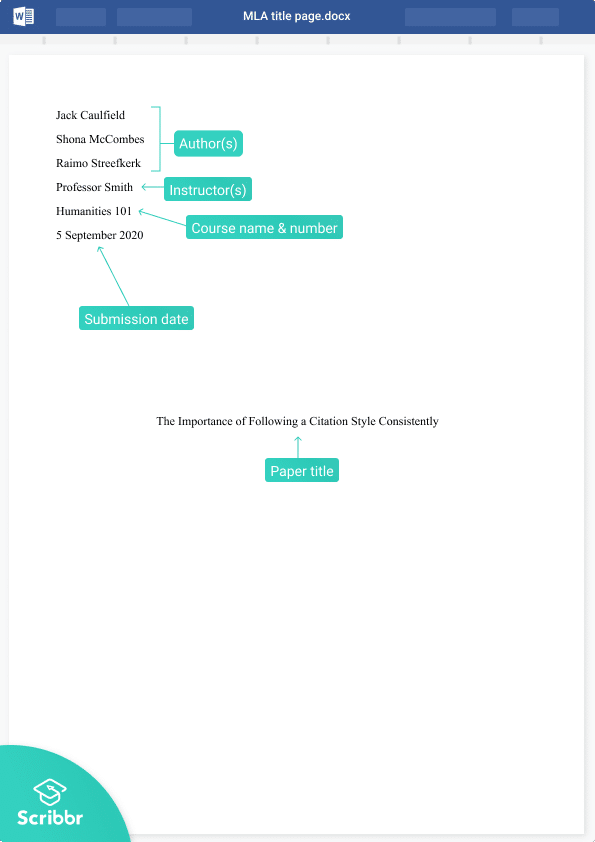MLA Title Page | When You Need One & How to Format It
In MLA style, a title page is usually not required for your paper. Instead, MLA recommends including a header on your first page listing your name, your instructor’s name, the course name and number, and the submission date, followed by the title of your paper.
However, you should include a separate title page instead in these cases:
- Your instructor requires it
- The paper is a group project (i.e. you need to list multiple authors)
The formats for a separate title page and a first-page header are shown below. You can also use our templates in Word or Google Docs.
Word template Google Docs template
MLA title page format
To create an MLA format title page, list the following on separate lines, left-aligned at the top of the page:
- Your name
- Your co-authors’ names, each on its own line, if it’s a group project
- Your instructor’s name
- The course name and number
- The submission date
Then leave a few blank lines and list the title of the paper, centered and in title case, halfway down the page. All text should be double-spaced and in the same font as the rest of the paper.
Creating an MLA header
Most MLA papers will instead list this information in a header, which appears on the same page as your opening paragraphs instead of on a separate page before them. In the header, left-aligned, list
- Your name
- Your instructor’s name
- The course name and number
- The submission date
Then on the next line, write the title of your paper, centered and in title case. On the line after that, start your first paragraph. The header and title should be double-spaced, like the rest of the paper.
Frequently asked questions about MLA format
- Do I need a title page for my MLA paper?
-
Usually, no title page is needed in an MLA paper. A header is generally included at the top of the first page instead. The exceptions are when:
- Your instructor requires one, or
- Your paper is a group project
In those cases, you should use a title page instead of a header, listing the same information but on a separate page.
- What font and size is used in MLA format?
-
MLA recommends using 12-point Times New Roman, since it’s easy to read and installed on every computer. Other standard fonts such as Arial or Georgia are also acceptable. If in doubt, check with your supervisor which font you should be using.
- Who uses MLA style?
-
MLA Style is the second most used citation style (after APA). It is mainly used by students and researchers in humanities fields such as literature, languages, and philosophy.
Sources in this article
We strongly encourage students to use sources in their work. You can cite our article (APA Style) or take a deep dive into the articles below.
This Scribbr articleCaulfield, J. (August 2, 2021). MLA Title Page | When You Need One & How to Format It. Scribbr. Retrieved October 19, 2022, from https://www.scribbr.com/mla/mla-title-page/




